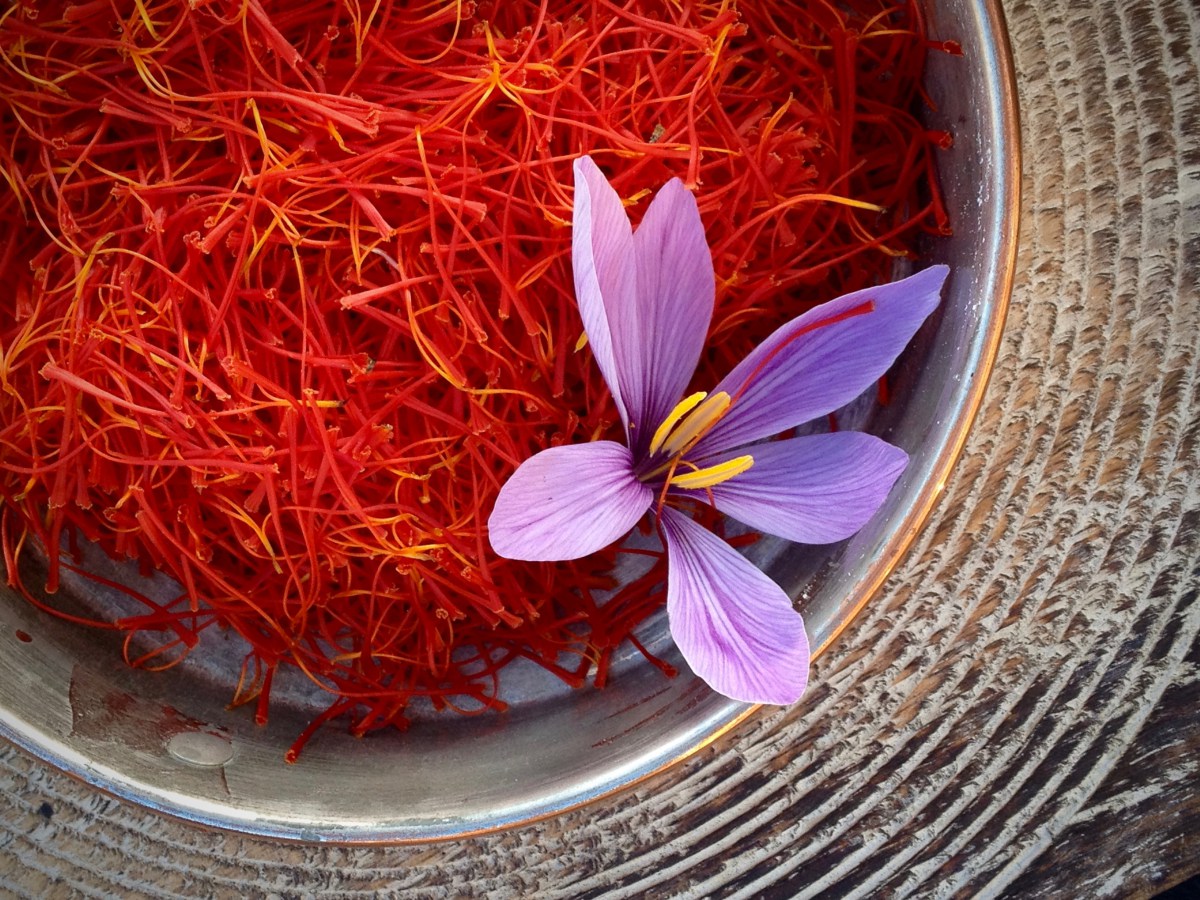
Saffron is a fascinating spice that has been prized for centuries for its unique flavor, vibrant color, and numerous health benefits. Derived from the Crocus sativus flower, this precious spice is known for its distinct aroma and flavor profile. Saffron is widely used in various cuisines around the world, and its inclusion can elevate any dish to new heights.
In this article, we will explore 17 interesting facts about saffron that will deepen your appreciation for this exquisite spice. From its historical significance and cultivation to its culinary uses and health properties, saffron has a rich and storied past that continues to captivate food lovers and health enthusiasts alike.
So, get ready to be immersed in the fascinating world of saffron as we uncover its hidden gems and shed light on its importance in the culinary realm and beyond.
Key Takeaways:
- Saffron is a rare and expensive spice with a rich history, used in both food and perfume. It’s known for its vibrant color, subtle flavor, and medicinal properties, making it a symbol of luxury and good luck.
- Saffron is hand-picked from delicate flowers and primarily cultivated in specific regions. It’s used in traditional dishes, perfumes, and even as a natural dye. Its versatility in both food and beverages makes it a valuable and sought-after spice.
The Costly Spice
Saffron is known as one of the most expensive spices in the world, primarily due to the labor-intensive process of harvesting. It takes an estimated 75,000 saffron crocus flowers to yield just one pound of saffron threads.
Ancient Origins
Saffron has a history dating back thousands of years. It is believed to have originated in Greece, spreading to regions such as Persia, Mediterranean countries, and eventually making its way to India and China.
Vibrant Color and Flavor
One of the distinguishing features of saffron is its vibrant red color. This natural pigment, called crocin, is responsible for the intense hue. Saffron also adds a unique and subtle flavor to dishes, with hints of floral, honey, and earthy notes.
Medicinal Properties
Saffron has long been used for its medicinal properties. It is believed to have antioxidant, anti-inflammatory, and mood-enhancing effects. Studies suggest that saffron may help improve symptoms of depression, enhance memory, and promote overall well-being.
Used in Traditional Dishes
Saffron is an integral part of traditional cuisines around the world. It is widely used in Indian, Persian, Spanish, and Moroccan dishes, adding both flavor and a golden color to rice, stews, desserts, and beverages.
Saffron in Perfumes
Not only is saffron valued for its culinary uses, but it is also highly prized in the perfume industry. Its delicate and alluring scent makes it a popular ingredient in luxury perfumes and fragrances.
Cultivated in Select Locations
Saffron requires specific growing conditions and is primarily cultivated in regions such as Iran, Spain, Kashmir, and Greece. The climate, temperature, and soil composition play a crucial role in the quality and flavor profile of saffron.
Hand-Picked Harvesting
During the harvesting process, saffron threads are carefully plucked by hand from the delicate purple flowers of the Crocus sativus plant. This meticulous approach ensures the preservation of the flavor and aroma compounds.
Rarity and Limited Availability
Due to the labor-intensive nature and limited growing regions, saffron remains a rare and sought-after spice. Its scarcity further contributes to its high price and exclusivity in the culinary and fragrance industries.
Symbol of Luxury
Throughout history, saffron has been associated with luxury and opulence. It has been used to dye royal garments, decorate palaces, and enhance the flavors of extravagant feasts.
Used in Traditional Medicine
Apart from its culinary uses, saffron has been utilized in traditional medicine for various purposes. It has been used to alleviate digestive issues, promote sleep, and enhance respiratory health.
The Symbolic Value
Saffron holds symbolic value in many cultures. It is often associated with purity, prosperity, and good luck. In some traditions, brides wear saffron-colored garments during wedding ceremonies as a symbol of fertility and abundance.
Substitute for Synthetic Dyes
Saffron’s vivid color has made it a popular alternative to synthetic dyes in the textile industry. It is used to dye fabrics, yarns, and even cosmetics, providing a natural and eco-friendly option.
Strict Quality Standards
Due to its high value and demand, saffron is prone to adulteration with lower-quality or counterfeit products. To address this, various organizations and governing bodies have established strict quality standards to ensure authenticity and purity.
Culinary Pairings
Saffron pairs exceptionally well with various ingredients and flavors. It complements dishes with seafood, rice, pasta, and even sweet treats like cakes and ice creams, adding a sophisticated touch.
Saffron Threads vs. Powder
When using saffron, it is recommended to use threads rather than powdered form to ensure the best quality and flavor. Saffron threads can be steeped in warm liquid before adding to recipes, allowing the flavors to fully develop and infuse the dish.
Versatility in Beverages
Saffron is not only limited to culinary applications but also finds its way into a range of beverages. It adds a unique twist to teas, cocktails, and even specialty coffees, elevating both the taste and visual appeal.
Conclusion
In conclusion, saffron is a fascinating spice with a long history and a wide range of uses. From its vibrant color to its distinct flavor and medicinal properties, saffron has become a valuable ingredient in various cuisines around the world. Whether you’re adding it to a paella, a curry, or a dessert, saffron can elevate your dish to new heights.
Remember to source your saffron from reputable suppliers to ensure its quality and purity. While it may be a bit pricey, its unique characteristics make it worth the investment. So go ahead, experiment with saffron in your kitchen, and unlock its magical properties.
FAQs
1. What is saffron?
Saffron is a spice derived from the Crocus sativus flower. It is made from the dried stigmas of the flowers and is known for its distinct red-orange color and unique flavor.
2. Where does saffron come from?
Saffron originated in Southwest Asia, with Iran being the largest producer of this precious spice. It is also cultivated in countries like Spain, India, Greece, and Morocco.
3. What gives saffron its color and flavor?
Saffron gets its vibrant color from the chemical compounds crocin and crocetin. The flavor comes from the volatile oils, safranal, and picrocrocin, present in the spice.
4. How is saffron used in cooking?
Saffron is usually used in small quantities due to its potent flavor. It can be dissolved in warm water or milk before adding it to dishes like rice, stews, soups, and even desserts.
5. Are there any health benefits to consuming saffron?
Saffron contains several bioactive compounds that may have antidepressant, anti-inflammatory, and antioxidant properties. However, it is important to consume saffron in moderation and consult a healthcare professional for personalized advice.
6. How can I tell if saffron is of good quality?
High-quality saffron should have a vibrant red color with a strong aroma. The threads should be dry and brittle rather than damp or sticky. Buying saffron from reputable sources can help ensure its authenticity.
7. What is the shelf life of saffron?
Saffron can be stored in an airtight container in a cool, dark place for up to two years. However, for the best flavor and potency, it is recommended to use it within a year.
Saffron's allure extends beyond culinary delights. Football enthusiasts might enjoy learning about Saffron Walden Town FC's rich history. Actress Saffron Burrows' life story captivates with unexpected twists and turns. For those curious about cryptocurrency, exploring facts about Saffron Finance SFI could prove enlightening. Each topic offers a unique perspective on this fascinating spice's far-reaching influence.
Was this page helpful?
Our commitment to delivering trustworthy and engaging content is at the heart of what we do. Each fact on our site is contributed by real users like you, bringing a wealth of diverse insights and information. To ensure the highest standards of accuracy and reliability, our dedicated editors meticulously review each submission. This process guarantees that the facts we share are not only fascinating but also credible. Trust in our commitment to quality and authenticity as you explore and learn with us.


